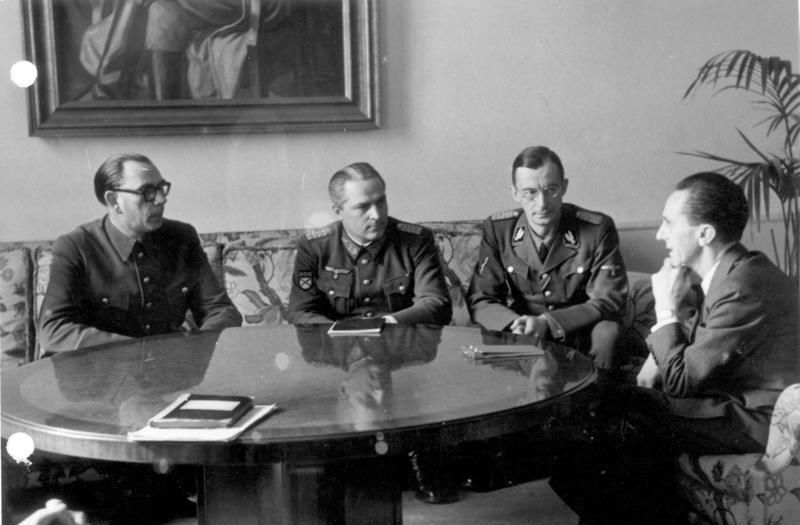On 7 February 1946, during the interrogation of former commander Andrei Vlasov, the details of the establishment of the Committee for the Liberation of the Peoples of Russia, the political centre of the Russian Liberation Army, came to light.
The Russian Liberation Army, led by Red Army Lieutenant General Andrei Vlasov, was formed on 27 December 1942 by Soviet war prisoners who defected to the enemy and became part of the Wehrmacht. The collaborators sought to overthrow Soviet power in the USSR with the help of the Third Reich.
In May 1945, Vlasov was taken prisoner by Soviet troops along with a large number of soldiers and officers of his army. An investigation immediately started.
The interrogation was conducted by Lieutenant-Colonel Sokolov one of the heads of the investigation section of the SMERSH Main Directorate.
“Sokolov: The same woman is depicted on many of the photographs that have been seized during the arrest. What is her last name?
Vlasov: This is a German woman – Adele Bielenberg.
Sokolov: How well did you know Ms Bielenberg?
Vlasov: I married Ms Bielenberg in April 1945. The marriage was performed in accordance with the formalities accepted in Germany.
Sokolov: By this act, you renounced your own family, who lives on Soviet territory?
Vlasov: Yes, I broke all the threads connecting me with my homeland. In August 1944, seeing that Himmler for some reason did not want to receive me, together with the German Strickfeldt, I left Berlin for Ruhpolding, which is 20 km from Salzburg. In Ruhpolding, I met Ms Bielenberg, who served as the head of the local rest house for recovering German soldiers. I learned that her husband, a prominent SS man in the past, was killed in 1943 in the Kuban, and her brother is a close associate of Himmler, and I decided to marry Ms Bielenberg. This way, I hoped to enter the SS circles, to strengthen my ties with the Germans, and I allowed for the possibility of gaining access to Himmler through Ms Bielenberg’s brother. I managed to persuade Bielenberg to become my wife quite easily. Assuming that my relationship with Ms Bielenberg will become known to Himmler, in conversations with her I persistently pursued the same idea that if I was given more freedom of action, I could organise a combat-ready army of war prisoners that would aid the Germans in the war against the Soviet Union... I cannot say that this somehow influenced subsequent events, but, as I have already said, on 18 September 1944, I was summoned from Ruhpolding to see Himmler, and I received from him the assignment to create a Committee for the Liberation of the Peoples of Russia. Himmler later allowed me to marry Ms Bielenberg”.
The trial of Vlasov and “Vlasovites” took place in Moscow from July 30 to 1 August 1946.
Source:
‘The Vlasov Case: History of a Betrayal’ by the Russian State Archive of Social and Political History (RGASPI)
























